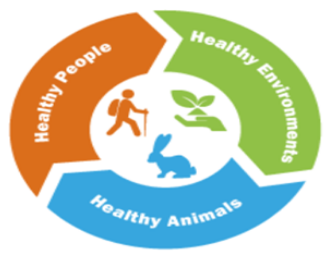Context:
Recently, a regional Review Meeting for the Animal Husbandry and Dairy sector highlighted that the livestock sector is consistently growing at a high Compound Annual Growth Rate (CAGR) of 7.67% during 2014-15 to 2021-22.
About Animal Husbandry:
- Changing Diets and Income: The growth is attributed to parameters of the Livestock Sector such as Dairy, Bovine, Poultry, Goatery/Piggery etc.
- Reliable source of livelihood: It is becoming a more dependable source of livelihood for farmers compared to crop cultivation.
- Vagaries of Climate Change: The shift is due to climate change-related uncertainties that threaten crops, making animal farming a safer option.
- Primary Means of Sustenance: This trend suggests that livestock husbandry could replace crop farming as the primary agricultural focus.
- Contribution to GVA: Livestock’s contribution to the gross value added (GVA) has risen, while crops’ share has decreased.
- Role in Women Empowerment: There were five million women members in dairy cooperatives in 2015-2016, and this increased further to 5.4 million in 2020-2021.
Challenges of Animal Husbandry
- Low Productivity: The average annual milk yield of Indian cattle is 1172 kg which is only about 50 percent of the global average.
Government Programs:
- Credit Guarantee Scheme
- Rashtriya Gokul Mission (RGM)
- National Livestock Mission (NLM)
- Animal Husbandry Infrastructure Development Fund (AHIDF)
- Livestock Health and Disease Control (LH&DC) Scheme
- National Animal Disease Control Programme (NADCP)
|
- Animal Diseases: The inadequate coverage of vaccination is continuously resulting in economic losses due to various animal diseases.
- Shortage of Fodder: India with only 2.29 percent of land area of the world is maintaining nearly 10.70 percent of livestock with only 5 percent of its cultivable land under fodder production.
- Institutional Support: There is no MSP support for animal husbandry products and they lack marketing like crop-based commodities.
- Inadequate Processing and Value Addition: The processing rate of buffalo meat is around 21 percent and 6 percent for the poultry due to lack of necessary infrastructure.
- Informalization of Sector: The Indian livestock and livestock product market are mostly underdeveloped, irregular, uncertain, and lack transparency.
- Inadequate attention towards extension services.
- Insurance: Currently, only 6% of the animal heads (excluding poultry) are provided insurance cover.
- Greenhouse Gas Emissions: Cattle in India account for approximately 33% of the country’s total greenhouse gas emissions.
Way Forward
- Establishment of Gene Banks: Preserving indigenous breeds of livestock is crucial as they are disease resistant, and adaptable to climate.
- Strengthening Forward and Backward Linkages: Forward linkages such as cold storage, food processing industries, etc.
 One Health Approach: It recognises that animal health, human health and the environment are inextricably connected.
One Health Approach: It recognises that animal health, human health and the environment are inextricably connected.- Cadre of Wildlife-Trained Veterinarians: For monitoring wildlife health and treating wildlife diseases.
- Disease Surveillance: Needs to be strengthened to ensure that wild diseases do not cause outbreaks.
- Developing capacities of extension personnel on extension management, such as training methods, audio visual aids, etc.
- Area Specific Policy: For example, focus should be towards poultry in areas suitable for poultry production and towards fisheries and aquaculture in coastal areas.
- Women Inclusive Policies:
- For example, National Smallholder Poultry Development Trust (NSPDT), facilitated by PRADAN, enables poor women in rural India to start and run successful poultry enterprises.
Conclusion
Animal husbandry plays a vital role in India’s economy and food security. It contributes to livelihoods, nutrition, and rural development. Sustainable practices are essential for balanced growth, ensuring both human welfare and animal well-being.
News Source: Business Standard
![]() 25 Aug 2023
25 Aug 2023
 One Health Approach: It recognises that animal health, human health and the environment are inextricably connected.
One Health Approach: It recognises that animal health, human health and the environment are inextricably connected.